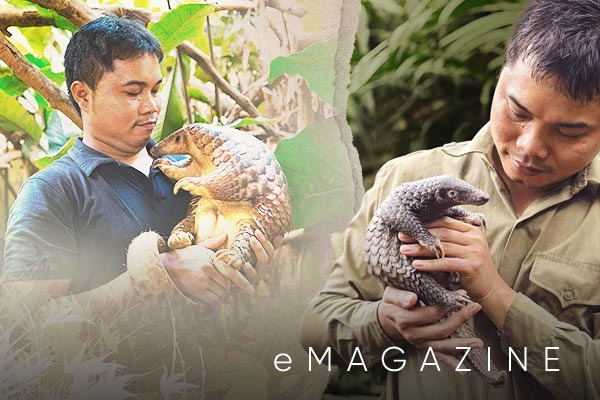Mr. Tran Xuan Cuong, director of Pu Mat National Park, says there have been tiger sightings recently but only one photo of a tiger, taken on December 21 in 1999, exists.
The automatic camera was provided by the European community as a result of a partnership between Pu Mat National Park and Conservation International.
The adult tiger in the photo is estimated to weigh between 150-170kg. The image shows the biodiversity of the natural forest where scientists conduct conservation research on wildlife species in Pu Mat National Park.
“Photographs, film and automatic cameras are stored in the unit archives. This is the only photo in Vietnam that was taken of tigers living in the wild. The photo was taken at 1:30 a.m., proving that the tiger still walks around at night to hunt," said Mr. Cuong, the director of the park.
The camera also captured an image of an elephant at the location where the tiger had passed. As for the specific location where the tiger and elephant were photographed, Mr. Cuong insisted on not revealing information due to security reasons.
From 2018 to 2020, rangers in Pu Mat set up 617 photo traps in 200 automatic cameras. In the past, a ranger would go to the forest once a week to change the cameras’ batteries. But now that camera technology has improved, batteries can last up to three months before the rangers return and set up new camera positions.
The locals have reported seeing tiger tracks found in Pu Mat Nation Park near the Vietnam-Laos border. However, despite the rangers’ efforts setting up photo traps and cameras, there are still no photos of tigers.
“Tigers are at the top of the food chain and need to be preserved in the wild. If they become extinct, other species eaten by the tiger will thrive. In Pu Mat, wild boars and ungulates have grown very strongly,” Mr. Cuong said.
In Pu Mat, there are footprints of wild boar everywhere. Rangers patrolling the forest face danger, and birds nesting on the ground can also be destroyed by wild boars. The increasing number of boars can lead to an ecological imbalance and broken food chain in the forest environment.
Cuong said that rescued tigers brought to the wildlife rescue center have grown quickly, each now weighing nearly 40kg. But due to their size, the living environment at the center is no longer suitable. Soon the rescue center will hand over the seven tigers to another center that is more qualified to take care of them.
 |
|
An automatic camera installed in Pu Mat National Park.
|
 |
|
A camera captured an image of an adult tiger in 1999 in Pu Mat National Park. |
 |
|
Forest rangers go to the forest to install automatic cameras. |
 |
|
The photo shows seven tigers growing up at a rescue center in Pu Mat National Park. |
 |
|
Tiger cubs rescued from a wildlife trafficking ring. |
 |
|
Outside the tiger cage. |
 |
|
Strict regulations are enforced for the tiger’s keepers and caretaker. |
 |
|
The cages are cleaned daily. |
 |
|
Tiger cubs in their cage. |
 |
|
A tiger growling in a cage... |
 |
|
... shows its ferocity. |
 |
|
The gate to the cages must be carefully locked after entering and exiting. |
 |
|
The tigers can be very aggressive when people approach the cage. |
 |
|
Their diet mostly consists of beef. |
 |
|
|
 |
|
|
 |
|
The heating system warms the tigers when the temperature drops at night and on cold rainy days. |
 |
| One mistake made when taking care of the tiger can be dangerous. Caretakers must be thorough and careful with their work. |
Quoc Huy

Conservationist leaves his heart in the vast green forests
Born and reared in the deep green forest land of Ninh Binh and having traveled the globe, Nguyen Van Thai has always returned to appreciate, love, defend and safeguard the forests.

Wildlife conservation: Risks and efforts
According to the Wildlife Conservation Society (WCS), in the period from 2013-2017, Vietnam recorded 1,504 wildlife rule violations involving 1,461 suspects.